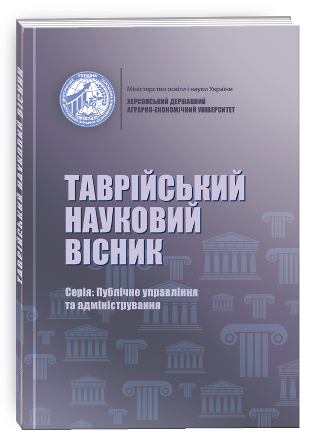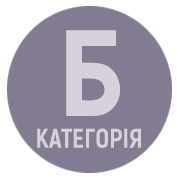FEATURES OF THE TRANSFORMATION OF THE NETWORK OF GENERAL SECONDARY EDUCATION INSTITUTIONS IN UKRAINE IN THE CONDITIONS OF MARTIAL LAW
DOI:
https://doi.org/10.32851/tnv-pub.2022.5.6Keywords:
state policy in the field of education, management of education, network of schools, optimization.Abstract
The article analyzes the essence and features of the mechanisms of transformation of the network of general secondary education institutions in Ukraine under martial law. As part of the policy of decentralization of power in Ukraine, which has been implemented since 2014, new principles for the functioning and development of the education system in Ukraine were determined through the adoption and implementation of the Laws of Ukraine "On Education" and "On Complete General Secondary Education". These laws provide for the right of the founders of educational institutions, which are mostly village, settlement and city councils of territorial communities, to carry out the formation, reorganization, liquidation and repurposing of general secondary education institutions. According to statistics, the number of students per educational institution in Ukraine is lower than in most countries of the European Union, which are part of the Organization for Economic Cooperation and Development, which indicates the need to reform the existing network of general secondary education institutions. In the conditions of the armed aggression of the Russian Federation against Ukraine, the modernization of the school network in territorial communities is an urgent issue, taking into account socio-economic, demographic and other factors. During the review of the current regulatory and legal support for the processes of transformation of institutions of general secondary education, the need to develop a comprehensive approach of reforming the school network was determined, and an approximate algorithm of actions for the founder of an institution of general secondary education was proposed. In the study, recommendations were made regarding the ways to improve the regulatory and legal support of the processes of formation, reorganization, liquidation and repurposing of general secondary education institutions under martial law. In particular, in part of mandatory public discussion and compliance with labor legislation when local self-government bodies exercise their own powers in part of the modernization of the school network of the territorial community.
References
Заклади загальної середньої освіти (за даними Міністерства освіти і науки України). URL : https://ukrstat.gov.ua/operativ/operativ2005/osv_rik/ osv_u/znz_u. html
Інформаційно-аналітичний збірник «Освіта України в умовах воєнного стану». URL : https://iea.gov.ua/wp-content/uploads/2022/08/education- of-ukraine_2022.pdf
TALIS 2013 Results: An international Perspective on Teaching and Learning, TALIS, OECD Publishing, Paris, 2014. 442 p.
Інформаційне повідомлення про проведення громадського обговорення проєктів рішень сесії Рава-Руської міської ради «Щодо оптимізації мережі, ліквідації, перепрофілювання (зміна типу) та перейменування закладів загальної середньої освіти та їх філій Рава-Руської міської ради». URL : https://rava-mr.gov. ua/news/1661876724/
Проведення громадського обговорення трансформації закладів загальної середньої освіти Онуфріївської селищної ради. URL : https://onufriivska-gromada. gov.ua/news/1662013202/
Справа №460/5622/21. URL : https://reyestr.court.gov.ua/Review/106086237
Про правовий режим воєнного стану: Закон України від 12 травня 2015 р. № 389-VIII. URL: https://zakon.rada.gov.ua/laws/show/389-19
Про організацію трудових відносин в умовах воєнного стану: Закон України від 15 березня 2022 р. № 2136-IХ. URL: https://zakon.rada.gov.ua/laws/show/2136-20







